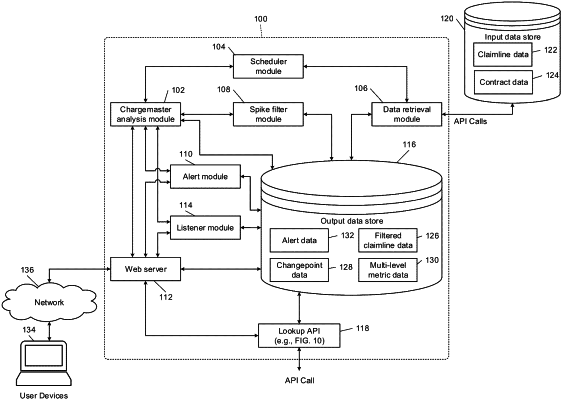| CPC G06Q 30/04 (2013.01) [G16H 10/00 (2018.01)] | 20 Claims |

|
1. A computerized analysis system for automatic anomaly identification, the system comprising:
processor hardware; and
memory hardware configured to store instructions that, when executed by the processor hardware, cause the processor hardware to perform operations, wherein the operations include:
operating the system at a large scale by setting a lookback period, wherein the lookback period includes a number of past time periods, and wherein each of the past time periods is measured in at least one of days, weeks, and years,
wherein the large scale includes at least 10,000 records;
obtaining claimline data for a period of time the lookback period from an input data store, wherein the claimline data comprises includes a plurality of billing codes and prices of the plurality of billing codes associated with a provider;
determining whether a changepoint exists in the plurality of billing codes in the claimline data;
determining a statistical parameter of changepoints per day during the period of time;
identifying a chargemaster increase for the provider in response to the statistical parameter of changepoints exceeding a threshold;
in response to identification of the chargemaster increase, publishing an alert that the chargemaster increase has occurred for the provider, wherein the alert includes at least one of:
an identification of the provider;
a chargemaster increase date;
a number of claimlines;
a number of changepoints;
an identification of the billing code; and
a price of the billing code at the changepoint,
creating a user interface for display to a user; and
transforming the user interface in response to the alert.
|